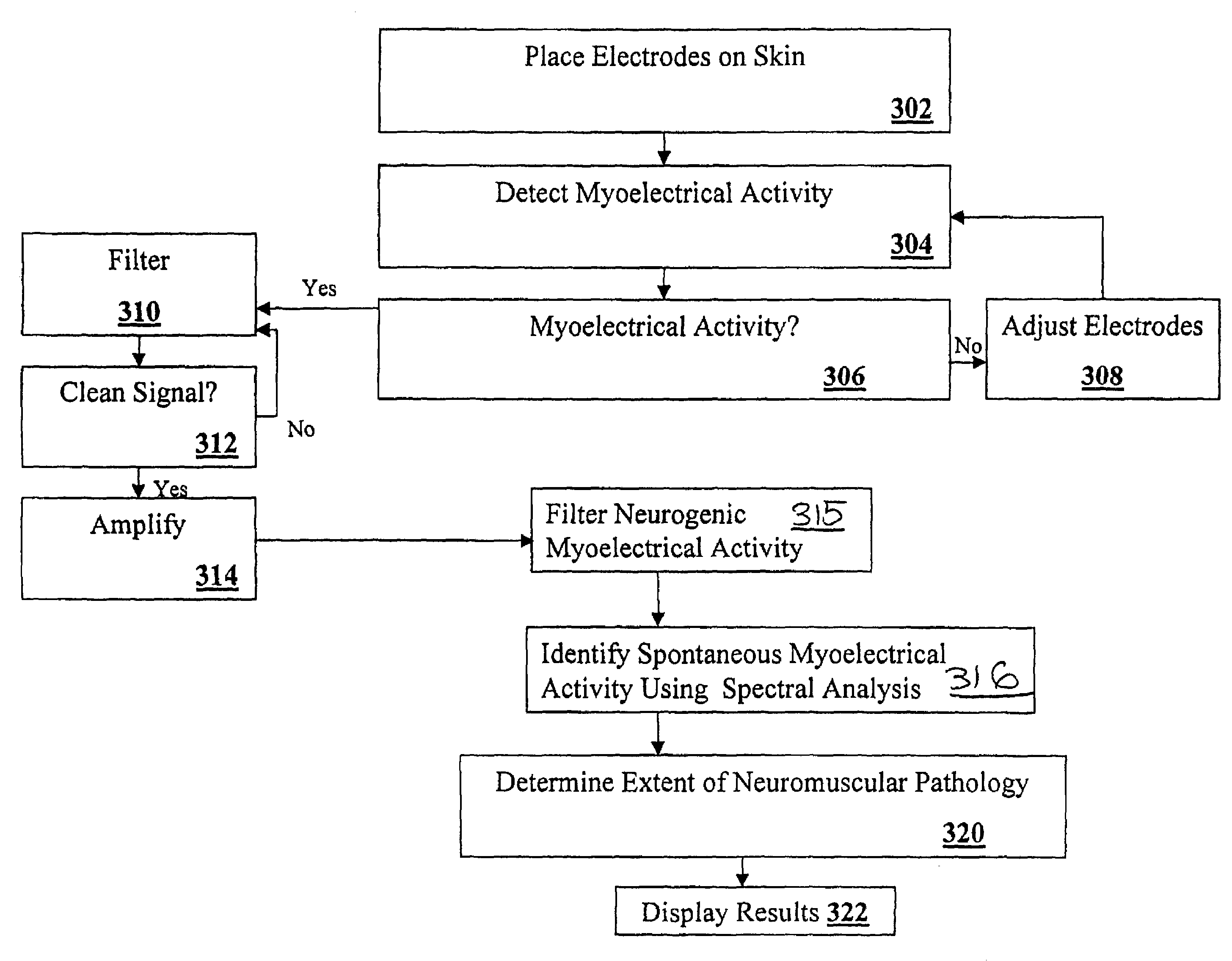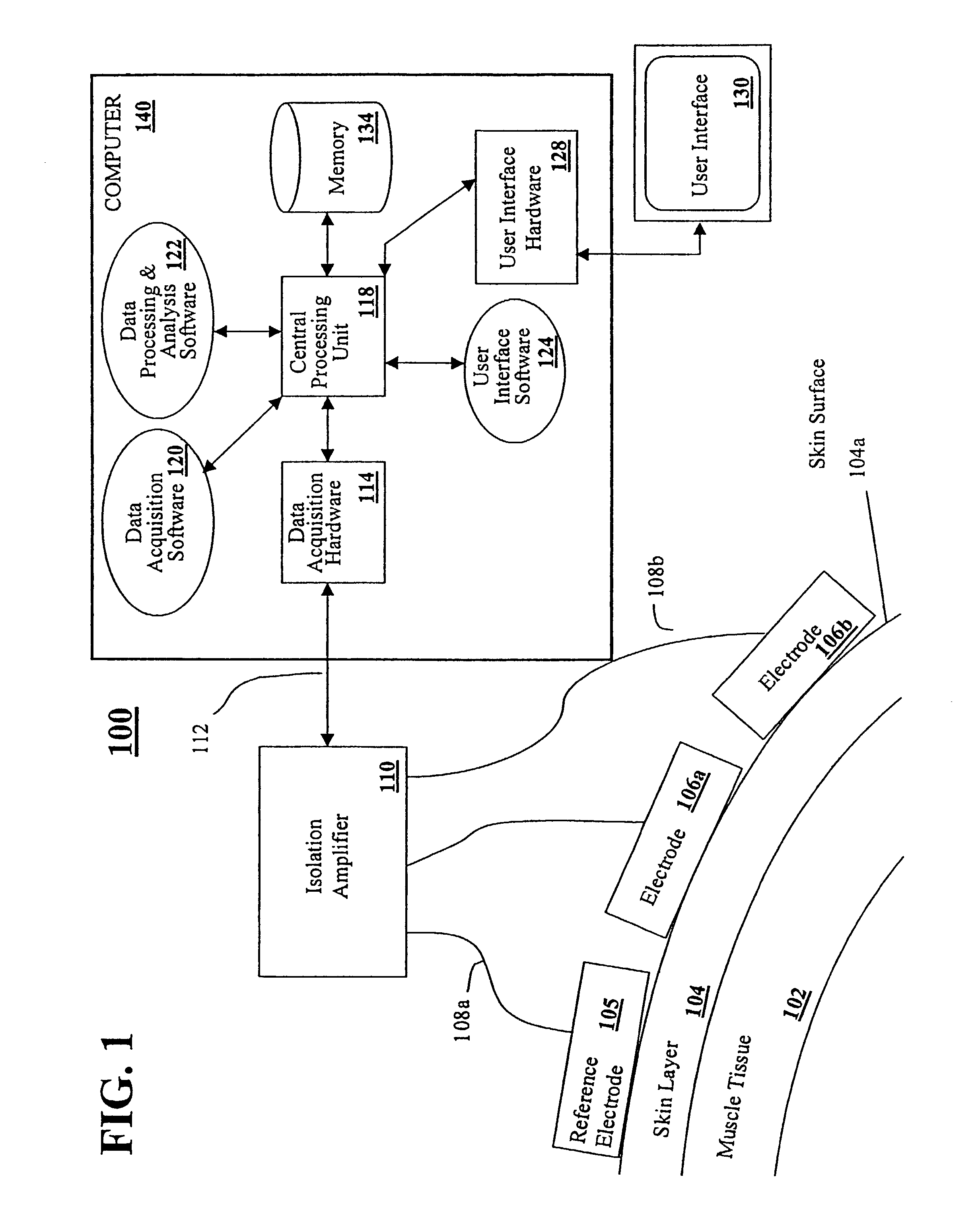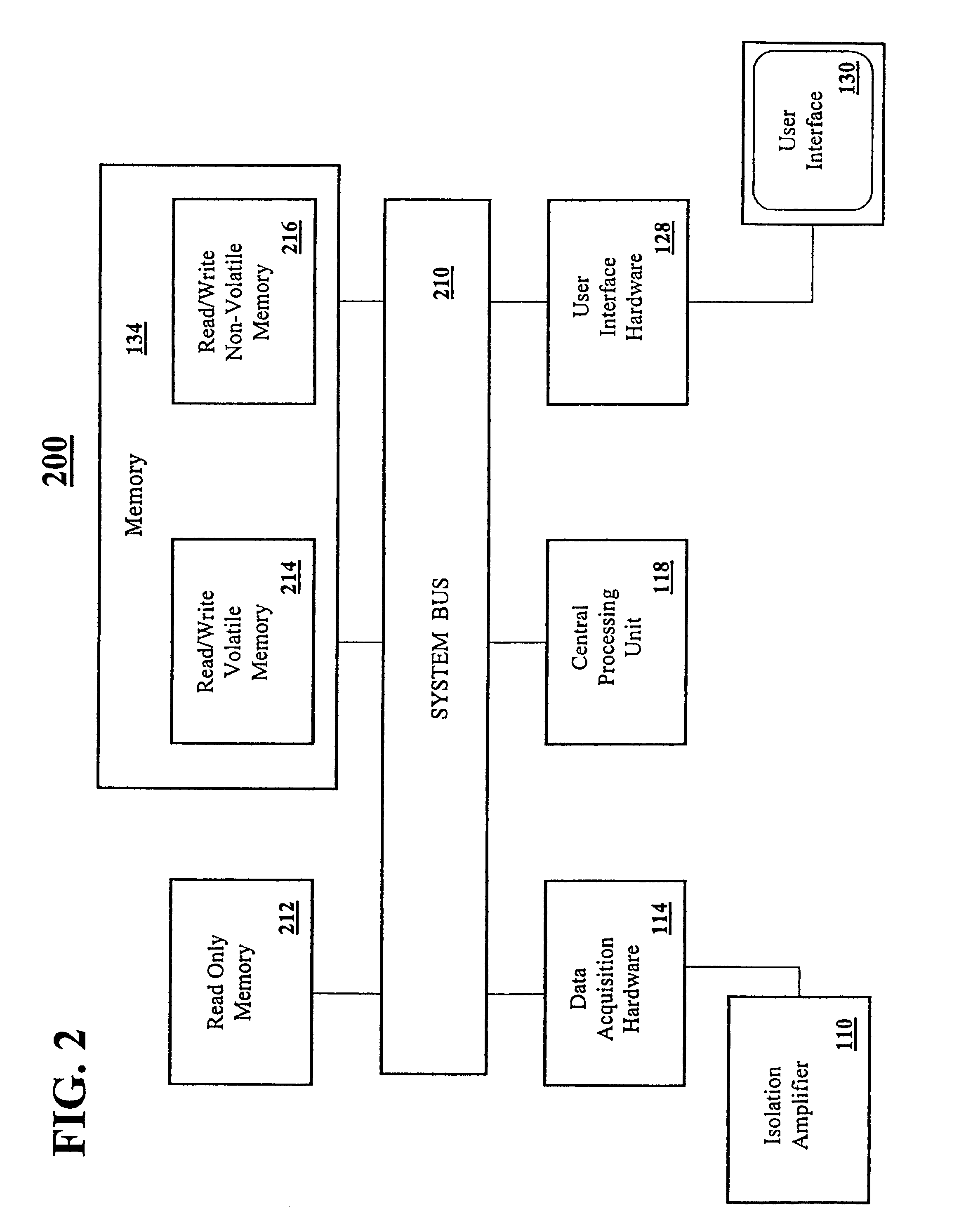Devices and methods for the non-invasive detection of spontaneous myoelectrical activity
a non-invasive and bioelectrical technology, applied in the field of devices and methods for the non-invasive detection of spontaneous bioelectrical activity, can solve the problems of serious back pain resulting from radiculopathy, dangerous causes of lower back and neck pain, and need surgery
- Summary
- Abstract
- Description
- Claims
- Application Information
AI Technical Summary
Benefits of technology
Problems solved by technology
Method used
Image
Examples
Embodiment Construction
[0029]The devices and methods of the invention provide for the non-invasive detection of spontaneous myoelectrical activity generated from skeletal muscle. The presence of spontaneous myoelectrical activity within muscle is an important diagnostic indicator of neurological or neuromuscular pathology. As the term is used throughout, neuromuscular pathology means the presence of pathology in nerve roots, nerves or muscles. Accordingly, the invention is particularly useful for the non-invasive detection and diagnosis of neuromuscular pathology, such as caused by cervical and lumbrosacral radiculopathy, demyelinating polyneuropathies, intravertebral disc disease, and entrapment neuropathies such as carpal tunnel syndrome. Some causes of neuromuscular pathology can lead to muscle denervation and increased spontaneous myoelectric activity within the affected muscle tissue resulting from muscle fiber fibrillation potentials or positive sharp waves (PSW). Physicians can use the presence and...
PUM
 Login to View More
Login to View More Abstract
Description
Claims
Application Information
 Login to View More
Login to View More - R&D
- Intellectual Property
- Life Sciences
- Materials
- Tech Scout
- Unparalleled Data Quality
- Higher Quality Content
- 60% Fewer Hallucinations
Browse by: Latest US Patents, China's latest patents, Technical Efficacy Thesaurus, Application Domain, Technology Topic, Popular Technical Reports.
© 2025 PatSnap. All rights reserved.Legal|Privacy policy|Modern Slavery Act Transparency Statement|Sitemap|About US| Contact US: help@patsnap.com



